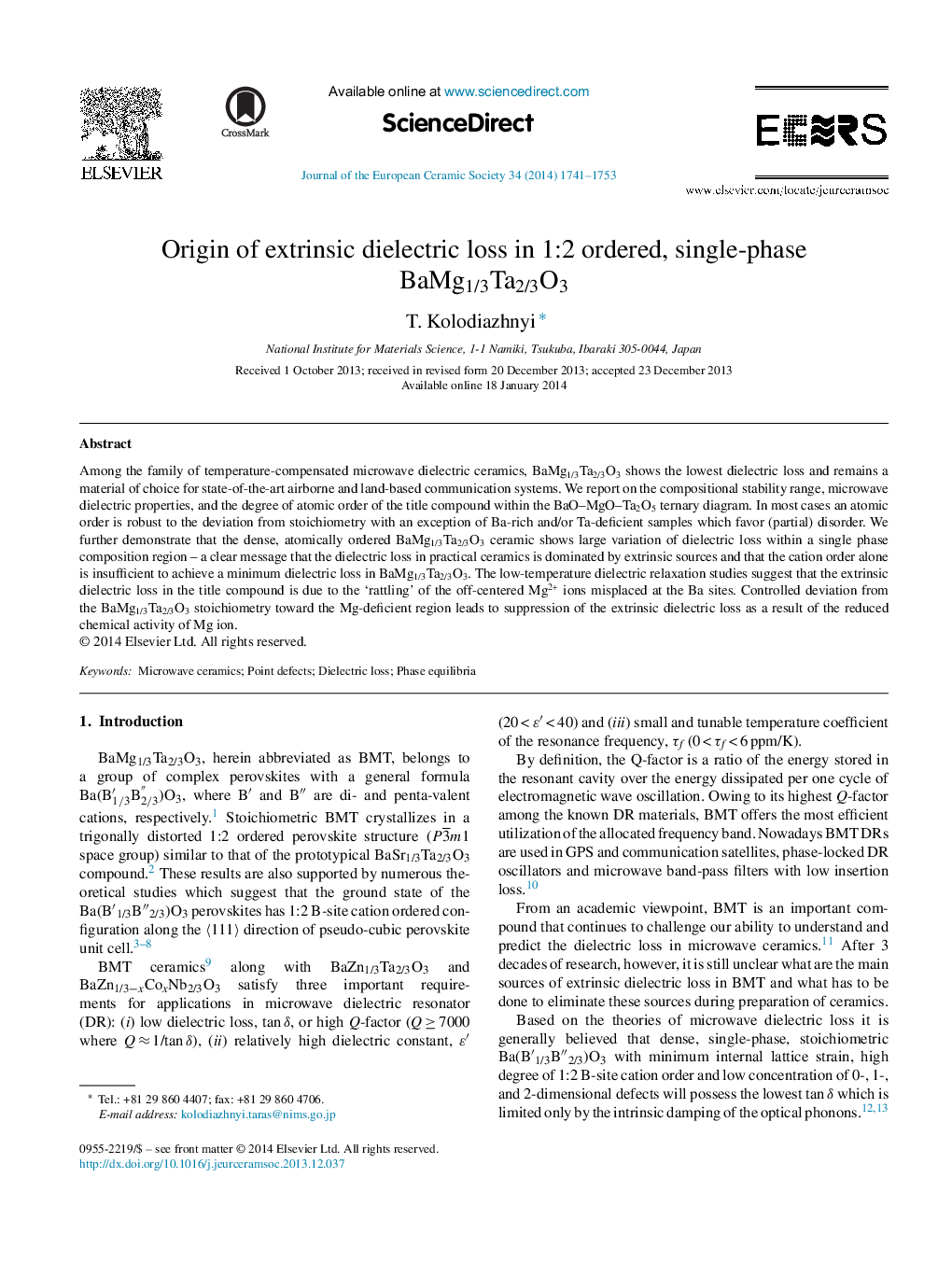| Article ID | Journal | Published Year | Pages | File Type |
|---|---|---|---|---|
| 10629626 | Journal of the European Ceramic Society | 2014 | 13 Pages |
Abstract
Among the family of temperature-compensated microwave dielectric ceramics, BaMg1/3Ta2/3O3 shows the lowest dielectric loss and remains a material of choice for state-of-the-art airborne and land-based communication systems. We report on the compositional stability range, microwave dielectric properties, and the degree of atomic order of the title compound within the BaO-MgO-Ta2O5 ternary diagram. In most cases an atomic order is robust to the deviation from stoichiometry with an exception of Ba-rich and/or Ta-deficient samples which favor (partial) disorder. We further demonstrate that the dense, atomically ordered BaMg1/3Ta2/3O3 ceramic shows large variation of dielectric loss within a single phase composition region - a clear message that the dielectric loss in practical ceramics is dominated by extrinsic sources and that the cation order alone is insufficient to achieve a minimum dielectric loss in BaMg1/3Ta2/3O3. The low-temperature dielectric relaxation studies suggest that the extrinsic dielectric loss in the title compound is due to the 'rattling' of the off-centered Mg2+ ions misplaced at the Ba sites. Controlled deviation from the BaMg1/3Ta2/3O3 stoichiometry toward the Mg-deficient region leads to suppression of the extrinsic dielectric loss as a result of the reduced chemical activity of Mg ion.
Related Topics
Physical Sciences and Engineering
Materials Science
Ceramics and Composites
Authors
T. Kolodiazhnyi,
